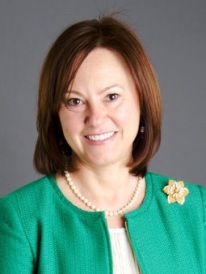 At last year’s BPS meeting, while talking with several of you about how the Committee for Professional Opportunities for Women (CPOW) can better serve the BPS membership, I learned — much to my surprise — that the perception of gender equality and fairness in biophysics varies widely among our colleagues. At one extreme, some expressed disappointment that “not much has changed” since CPOW was formed in 1972; at the other, some declared “mission accomplished.” I suspect that like me, many of you will disagree with both statements, but I cannot guess where on the spectrum a consensus, if there is one, may lie.
At last year’s BPS meeting, while talking with several of you about how the Committee for Professional Opportunities for Women (CPOW) can better serve the BPS membership, I learned — much to my surprise — that the perception of gender equality and fairness in biophysics varies widely among our colleagues. At one extreme, some expressed disappointment that “not much has changed” since CPOW was formed in 1972; at the other, some declared “mission accomplished.” I suspect that like me, many of you will disagree with both statements, but I cannot guess where on the spectrum a consensus, if there is one, may lie.
To investigate these perceptions, CPOW will host a blog series where members can express their views on the subject by briefly answering these four questions: In your opinion,
1. What is the current state of gender equality in science and biophysics?
2. What is the value of having equality and true inclusiveness?
3. What is one area that needs attention; and
4. What is the one thing that can be done right away?
We kick off this initiative by publishing below answers from our fearless BPS Past President Suzanne Scarlata. You are encouraged to read and comment on these blog posts, and to volunteer your own answers by emailing them to Laura Phelan at [email protected].
Thank you for your engagement. I look forward to hearing from you,
—Gabriela K. Popescu, CPOW Chair

Suzanne Scarlata, Worcester Polytechnic Institute
What is the current state of gender equality in science and biophysics?
Compared to where we were 20 years ago, we’ve made a great deal of progress. Women now populate key positions in companies, universities, and scientific organizations. While we are still underrepresented especially in top positions, our numbers are growing and the trend is going up. However, we are far from shattering the glass ceiling.
Women have a better support system than in years past. In previous years when only a few senior women were around, women had to rely on father figures for advice in making their way through the system, which, of course, could limit the content of conversations. Now there are more women mentors both locally and through groups like the BPS that can bring together women to share their thoughts.
For the most part, I feel that time is on our side. Most colleagues my age and younger are fairly unbiased and this percentage is increasing every decade. Just a few years ago, I attended a meeting where I was the only female speaker. One of organizers was openly misogynistic which seemed to bother my male colleagues even more than me.
What is the value of having equality and true inclusiveness?
It goes without saying that having true inclusiveness and equality is invaluable. Everyone should be able to have the opportunity to work at their full potential and be appreciated and respected for what they do.
What is one area that needs attention?
Scientifically, we need to continue to promote ourselves (unfortunately, most of us are really bad at self-promotion) and our female colleagues by suggesting them for talks, for positions on editorial boards, and other leadership positions. We need to cite their articles when appropriate and give women the credit they deserve.
Importantly, we need to continually question whether we are treating our students, post-docs, and peers with encouragement and respect. The other day, a female undergraduate biochemistry major with a high GPA told me that her male advisor thought that she should focus on a career in writing and not science once she graduates. I had different advice!
What is the one thing that can be done right away?
While some countries have experienced recent setbacks regarding gender bias, we need to be persistent in encouraging equality both in and out of the lab. Nonscientists may not be aware of the many opportunities there are for their daughters in science, or aware of the problems they might encounter. We need to encourage women at all levels so that our numbers will grow.
When Ruth Bader Ginsburg (one of the nine members of the United States Supreme Court) was asked when she thinks there will be enough women on the court, she replied, “And my answer is when there are nine.”